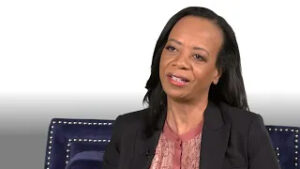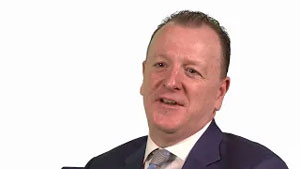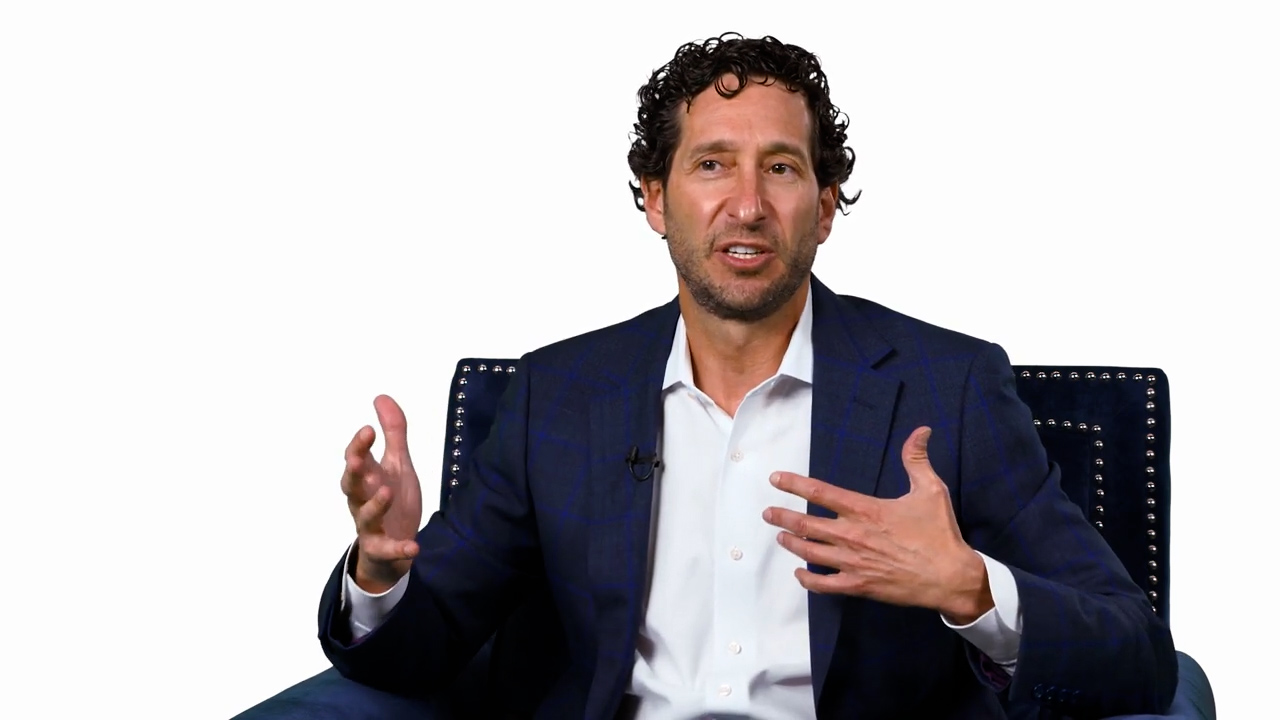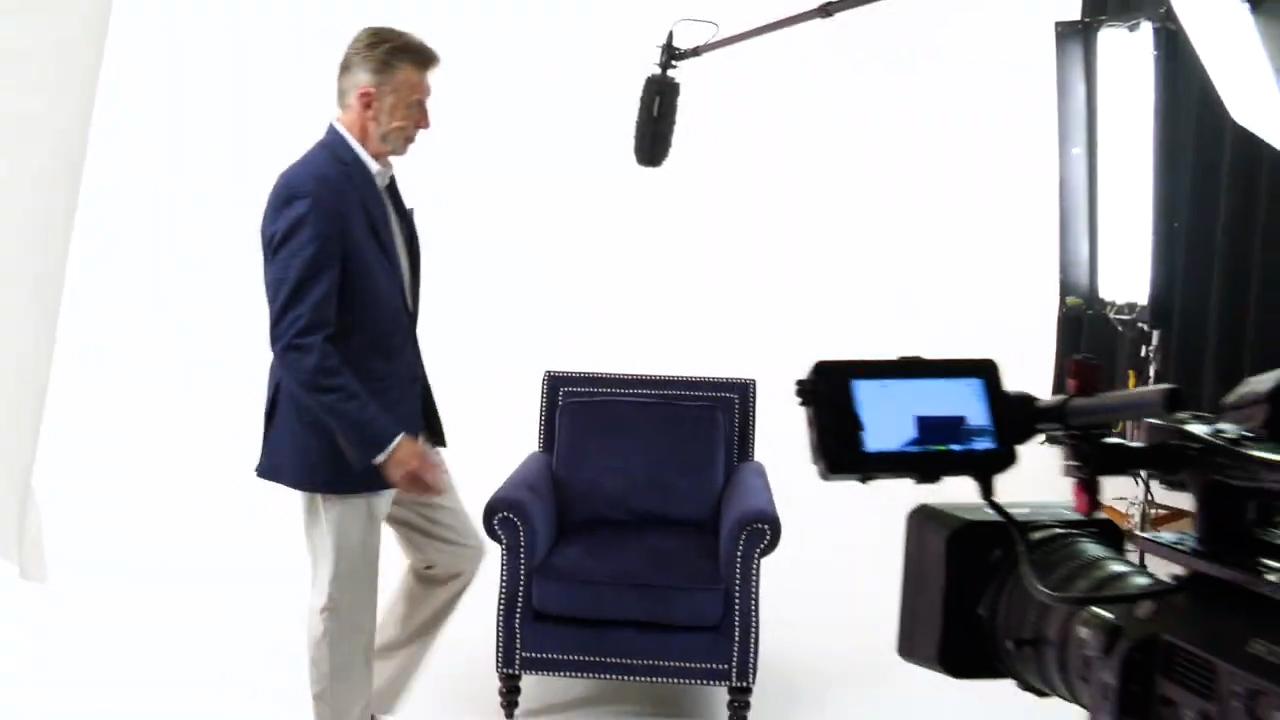Because of its tourism-based economy, and also its tremendous growth rate, Nevada is a unique state for owners of stores, shopping centers and malls. On October 12, we asked several retail industry leaders to take time out from holiday-shopping preparations to give us their insights into the retail industry in Nevada. This meeting was part of Nevada Business Journal’s Industry Outlook series. Kathleen Foley, editor of Nevada Business Journal, served as moderator for the roundtable, which included a discussion of the Nevada market, difficulties in recruiting and retaining talent, the holiday outlook and new developments in retail. Following is a condensed version of the discussion. Participants were first asked to introduce themselves and say a few words:
Chuck Vogel: Right now, the business outlook in the Nevada market, in particular Southern Nevada, is very favorable. Our Nevada J.C. Penney stores are exceeding company averages at this time, and have been for the last couple years. We’ll be opening another store next year in Summerlin, so that will give us a four-store presence in the market. We’re very interested in talking about training and keeping good employees, especially with the growth going on in the market. It’s extremely hard right now to keep good employees. At the J.C. Penney Company, we have mostly entry-level positions in the retail environment, and turnover right now is just huge among all our stores, with people leaving for other retail jobs offering pretty exorbitant salaries.
John Zilliken: I’m the vice president/general manager of Mandalay Place, which opened in March. We own 16 of the stores at Mandalay Place. I act as a merchandise manager for those stores, and the other part of my job is the traditional mall-manager job. At our 16 stores, in the last five days I’ve lost two managers, an assistant manager and 10 sales assistants. Other stores in my mall have lost probably around that many. The main driver of the turnover is the high salaries I’m hearing quoted for stores opening up in the Forum Shops’ new expansion, and a lot of them are offering health benefits right off the bat, as well as vacation. I have a meeting with my supervisors this week to see what I can do to stem the tide. It’s an entry-level job, and I fully expect my managers to take this experience and go on to bigger and better things, but I didn’t think it was going to happen to this degree.
Lynne Thier: I am responsible for leasing the Boulevard and Meadows Malls for General Growth Properties.
Scott Freshwater: I am currently the west region manager for The Rouse Company, and prior to this I was the vice president and general manager of the Fashion Show as it went through its remodeling and expansion. One of the things on the agenda was the holiday outlook. I think most retailers are feeling pretty good about 2004. We had a strong first half of the year. The third quarter was somewhat inconsistent and not as strong as the first half, but as we approach the holiday season, the statistics I’ve seen call for about a 4.5 percent increase over last year. It is getting more and more difficult for retailers to drive that sales growth year after year. Innovation continues to be critical in our industry, at least from a retailer’s perspective, and as landlords we’re somewhat dependent on that. One of the things I’ve been seeing is segmentation within retailers. A recent example of that would be Pottery Barn’s depending on Pottery Barn Kids to reinvigorate it and continue to create some excitement for the consumer. Another example we’re going to see fairly soon is Gap, which is going to come out with a lingerie line. I know in the case of J.C. Penney, the off-mall strategy is a big part of what you’re doing. So hopefully, it will be a good year.
Scott Muelrath: I’m the general manager of the Galleria at Sunset, owned by Forest City Enterprises. We’re enjoying a very strong year – the strongest in the history of the mall – over 10 percent growth for the year. We anticipate a strong holiday season. One of the main concerns I have in managing a property like this is security. When I think of the overall economy here in Las Vegas, either a terrorist attack or (God forbid) an incident at some retail center here in Las Vegas that would cause consumers to pull in, that’s one of the very few things that could abruptly bring about a change, because everything is on a very positive track. The mall is doing very well; every space is occupied, so we’re feeling very optimistic.
Christina Lovering: I manage a retail center at Tropicana and Pecos with about 650,000 leasable square feet, on behalf of its Japanese owners. It’s been a phenomenal year. We’re now 93 percent leased in the large center. We have one of the last freestanding Wal-Mart stores, with about 120,000 square feet. There has been some talk of putting a Wal-Mart superstore in my center, but we don’t have the room for all the loading docks and other areas needed in back of the store. Our store was considered big eight years ago when I first took it on, but now it’s small compared to the giant super-stores. But even this smaller location brings in about $70 million a year for the owners. As you may have heard, a new Wal-Mart on Russell Road near the airport has been approved. So the owners think we can afford to give $20 million to the new Russell Road location, and still keep alive and well. I’ve got Sam’s Club, too, which has committed to staying, so I am in the process of working a deal with them to help them become competitive with Costco by putting in a gas station and a car wash.
Russell Joyner: I’m vice president and general manager of what is currently known as The Shops in Desert Passage. I’ve been there for about five months. Prior to that I succeeded Scott Freshwater as the vice president and general manager at the Fashion Show. My current focus is to work on the re-theming of Desert Passage, since the Aladdin was bought out by Planet Hollywood Hotel and Casino. We are on pace to make this conversion over the next 15 to 18 months, aiming for a spring 2006 completion time. We’re going to complete a cosmetic makeover of the façade, re-theme the project and work to develop a Hollywood theme for the new improved project as a whole. We want to take advantage of the “one-plus-one-equals-three” idea, with the hotel and casino working with the retail. The ideas we’ve heard from Planet Hollywood will go along with what we’re trying to accomplish in our leasing strategy, which is to go after the mid- to up-scale segment. With all the new retail on the Strip, and all the dollars being spent, aiming for a portion of those dollars is a realistic goal, as opposed to dominating the market. We’re very focused on trends, as well as on employee retention. Everyone shuffles jobs around, as opportunity comes to them, but when you’re talking about seasoned personnel, the best way to contend with turnover is to continue to recruit outside the area and incorporate that as part of the cost of doing business in this area. We have to educate ownership that you need to adjust your benefits, your payroll and the like, and that’s where you need to be competitive, because this is something I don’t see going away. It seems like there’s always something new and improved to lure employees away, and the only way to get them excited is to compensate them.
Dan Cetina: I’m the general manager of Fashion Outlets of Las Vegas in Primm, which is about 30 miles south of town. When you have a tourist Mecca, it makes retailing a lot easier. For some reason, people spend more when they’re on the road, even though they can find the same stores in the cities where they reside, so it’s great being close to Las Vegas. However, there are challenges to being in Primm. There’s not a rooftop around, so we have to literally bus our employees in on a daily basis. There’s a 24-hour-a-day bus route, fortunately. The employment issues are very big, but with so many people moving into Southern Nevada, there is a lot of opportunity for retail growth and to find good employees. We’re having a great year. We’re getting ready to open a number of new stores. We’re fortunate to have a number of outlet stores that are not in the city: for example, the Neiman Marcus outlet store is the only one in the area, and others have only a few locations across the country. This branding helps us attract a number of consumers who would probably not shop in other outlet centers and who are also looking for an alternative to traditional retail shopping. There really isn’t a lot of competition between the outlet and the traditional center; they really do complement each other. We not only attract visitors coming from overseas, but we also gain a lot of business from people traveling on I-15 between Las Vegas and Southern California.
Kathleen Foley (Nevada Business Journal): The first item on our agenda is how the Nevada market compares to other areas. Dan touched on this briefly when he was saying people like to spend money shopping when they’re on vacation. Any comments?
Muelrath: At the Galleria in Henderson, we feel some impact from tourism, whether it’s Arizona people coming in off the freeway from the south, or from Utah to the north, but really it’s the local who is buying. One of the things that’s so exciting for us is that locals are buying, and we’re doing so well. We have a little bit of competition right now with the District at Green Valley Ranch, which is a great project, but when that opened it didn’t even cause us a ripple, other than with one or two of the stores duplicated at the District. So from the residents’ standpoint, they’re coming out and shopping, and it’s just been outstanding.
Vogel: As you go away from Las Vegas Boulevard, the market becomes less tourism and then really goes into more of your true residents, like in any other city in America. The Boulevard Mall is still 25 percent tourists, but I remember when the figure was probably 75 percent. When they jumped in a cab on the Strip and said, “Take me to the closest mall,” that’s where they went. Now they have the Forum Shops or Mandalay Place or lots of other choices.
Joyner: The healthy residential business shows the economy in Nevada is solid. I’m working with 89 percent tourist business [at Desert Passage]. One thing we’re trying to focus on is how to get a larger percentage of residents to take advantage of the goods and services available on the Strip. Locals think it’s inconvenient to shop on the Strip, so we have to figure out creative ways to bring them in and make it worthwhile. Overall, everything we read about Nevada being one of the hotter areas of the country is evidenced by the testimony today that our sales are very brisk right now.
Cetina: Another unique part of this market is that so many people have second homes here. Are they tourists or residents? And how do you market to them? That’s a segment everybody needs to understand a little better, because length of stay and whether they’re a part-time resident or a tourist is really important, as well as how they spend and where they spend.
Thier: That’s going to continue to be more of a trend here in Las Vegas with the growth of vertical housing, which is just starting to come on-line. General Growth is experiencing very good growth in Southern Nevada. Meadows Mall finished a remodel at the end of last year, and sales so far this year are up 15 percent. The center’s doing really well. Boulevard is doing quite well, too. Sales are up about 5 percent, and we’re in the midst of final planning for a renovation we’re very excited about, to change it to more of a street-type project. I have worked in a lot of markets, and in comparison to other retail markets, Southern Nevada is confusing. Retailers who are looking to come into this market understand the Strip. When it gets to the local market, they’re completely baffled and confused. I spend a lot of time trying to explain to them that, when you get to a Galleria or a Meadows, it’s just like any other suburban mall in the country. One thing I’ve found is that people here follow trends a little closer, and they always want something new. In focus groups, people will say, “Well, the mall doesn’t look like (blank),” and they use examples of things on the Strip, even though they don’t go there often. So the expectation of the aesthetic plan is different from other markets also.
Vogel: This town is very driven by the “wow” factor. And even if you’re a resident, you hear so much about it that, you still expect that wow factor when you go somewhere in the suburbs.
Zilliken: Mandalay Place is only 100,000 square feet, so we had to make the most of it by developing unique attractions that would bring people in. Most of the stores have fewer than four locations anywhere in the world. For example, there’s only one Nike Golf Store in the world, and there’s only one 55 Degrees Wine and Design. Only three of our stores are chains. We claim to be – and want to be – very, very different. We just celebrated the end of our first full year in operation, although when we opened we only had four stores. Each month we do 10 percent or 15 percent better than the month before. We’re not at the Strip average (for revenue) yet, but in about a year we’re going to come pretty close.
Freshwater: The Strip is a multi-store market like no other market in the world. There’s been an incredible evolution of retail on the Strip and the more sophisticated traveler views Las Vegas as being a legitimate retail destination that is competitive with New York. At Fashion Show, we like to market the fact that we have 125,000 hotel rooms within walking distance of our property. However, the competition is getting more and more keen. Marketing to the tourist customer is all about creating awareness, because even though the average length of stay has increased, visitors have a limited time and a lot of options. So before their plane touches down at the airport or during the cab ride to the hotel, they’ve usually decided three or four things they’re going to do while they’re in town. If your message can reach them before they get here or shortly after they land, you’re in a much better position. As we’ve discussed, Las Vegas is over the top, larger than life, and there’s a themed aspect at every retail property on the Strip. As we look forward to the next five or 10 years, it will be interesting to see what develops as the new and improved mousetrap for the consumer. Steve Wynn is betting a lot of money that the days of the themed environment in Las Vegas are becoming passé, so we’ll have to see how that translates to the retail sector.
Cetina: Once tourists land here, they’re so overwhelmed that making up their mind what to do is almost impossible. We’re now on Orbitz and Expedia, so when somebody is online booking a flight or hotel, they can plan to include a visit to the outlet stores as part of their vacation. We have to attract people before they land here, because once they get here, their minds are made up – they know exactly where they’re going to visit and what restaurants and attractions they’re going to see.
Foley: Is the locals’ market any different here than any other places, or is it pretty much the same for national retailers like Wal-Mart?
Lovering: I’m working with several national chains: Office Depot, Rent-A-Center, KFC. If you look at the chains on a national basis, I would have to say KFC is suffering. Wal-Mart will always be a large retail draw. If I lose them, I might as well chop off my head. Home improvement stores like Home Depot do very well here. Office Depot, rather than being a retail draw, is doing more sales through the Internet.
Foley: Christine brings up a good point. Is there a lot of competition from Internet sales?
Vogel: Absolutely, but that’s one thing that Penney as a company embraces. We look at three channels of distribution: catalog, retail and Internet, and we use those three channels to our advantage through all our national marketing. Consumers actually shop all three; they can shop on the Internet and still pick up their purchase or return it at a brick-and-mortar facility. So there’s the convenience of both being able to shop at midnight and still go to a store to talk to a real person if there’s an issue or problem. Christine also mentioned the growth in home products, which we’ve also seen. Even though we’re a travel Mecca here, the “home nesting” trend that followed 9/11 is really big in this market. People want to make their homes look better, and this has been a huge business for us, with furniture and home goods.
Foley: Because of the competition from the Internet and competition in general, do you think there’s more of a push to make shopping an experience, with restaurants and theaters, instead of just going to buy things?
Thier: We believe you need to make shopping a day of experience for the customer, and it needs to be not just shopping, but in some cases, entertainment and restaurants. The mall needs to be a “town within a town.” It keeps customers longer and makes them happy – they spend more, so your sales go up.
Joyner: If you go to certain places because you like the restaurants, you wind up spending meaningful time in those places, and those are the kinds of hooks that get people intrigued by your facility.
Vogel: The days of opening up a mall and just expecting everybody to come are long gone. We ran into that as a company. We thought, “People have been coming to J.C. Penney for a hundred years, so they’ll keep coming.” Not true any more. You have to constantly reenergize yourself and make your facility the place they want to come for excitement, for the wow factor. It takes a lot of different things to drive that.
Cetina: At Primm, we’re trying for more attractions. We have a great roller coaster, the Desperado, which is a lot of fun. We tried to lure the Wet ’n Wild water park out to Primm. We thought it was a great place for them to be.
Freshwater: One of the secrets to the retail business, at least from a landlord’s perspective, is innovation and maintaining the appeal of your property. Historically, we’ve tried to do it by making sure our centers are leased to retailers that seem to be responding to consumer trends in the right way. We want to partner with retailers on the cutting edge of fashion trends. Design and architecture also play a part. One recent trend has been the use of more and more media in projects as a way of maintaining freshness, and that was a very important objective with what we did with the Fashion Show. We have a live performance stage, and also use large LED displays out in front. The interactive use of media can promote what’s going on inside or communicate fashion trends to the consumer.
Foley: With the emphasis on using media and LED screens, does that mean your focus is changing to try to attract younger buyers who are more into high-tech, or is it buyers in general?
Joyner: From my standpoint, that’s a target audience, but it’s not a specific age – it’s a mindset: people who are young in spirit. They like to shop young, dress young and they have discretionary income to afford the latest trends. You talked earlier about reenergizing, and it’s basically reinventing yourself. In many of the venues on the Strip, every three to five years, you’re looking at another major cosmetic overhaul in order to remain relevant with a fresh look, a different spin, new storefronts and store design. Scott’s point about marketing before people hit the ground is certainly a very effective tool for us.
Vogel: However you’re marketing to the consumer, the challenge you have as an owner/developer is deciding how much to spend on all this compared to the return on your investment. How much money can you really spend luring that consumer from another retailer? If you get caught up in Las Vegas “wow,” when does it stop? Do you leave the last billion-dollar development in the dust with a $2 billion development? As owners/developers, we can’t get caught up in that game of chasing a short-lived response from the consumer. In Las Vegas, I believe there’s enough for everyone. I’m not sure you really need to go to the extremes that the hotels and casinos have done in luring their consumers. We can all add a few more bells and whistles, but we also have to watch what the actual returns are from our retailers. And we also need to remember, there’s also the wow factor of customer service. Sometimes when business is good, you get lethargic and forget what kind of customer service you’re offering to the consumer.
Foley: Is it difficult to train employees to give excellent customer service, and does this factor into your concerns about finding quality employees?
Zilliken: It’s vitally important to be honest and up-front when you’re talking to potential hires. If you’re in a commission environment, there’s a potential to make a very good living, but they need to know that sometimes this job can be very difficult. You’re going to have ornery customers sometimes, and duties may include stocking shelves, receiving merchandise and attending meetings, which don’t bring in any commissions but need to be done. You have to be honest in the beginning, and then help them work through their experiences and show them why this is worth it – almost baby them. It’s vitally important to praise them when that is due, and also to make sure you don’t shy away from the constant need to counsel that person to become better.










